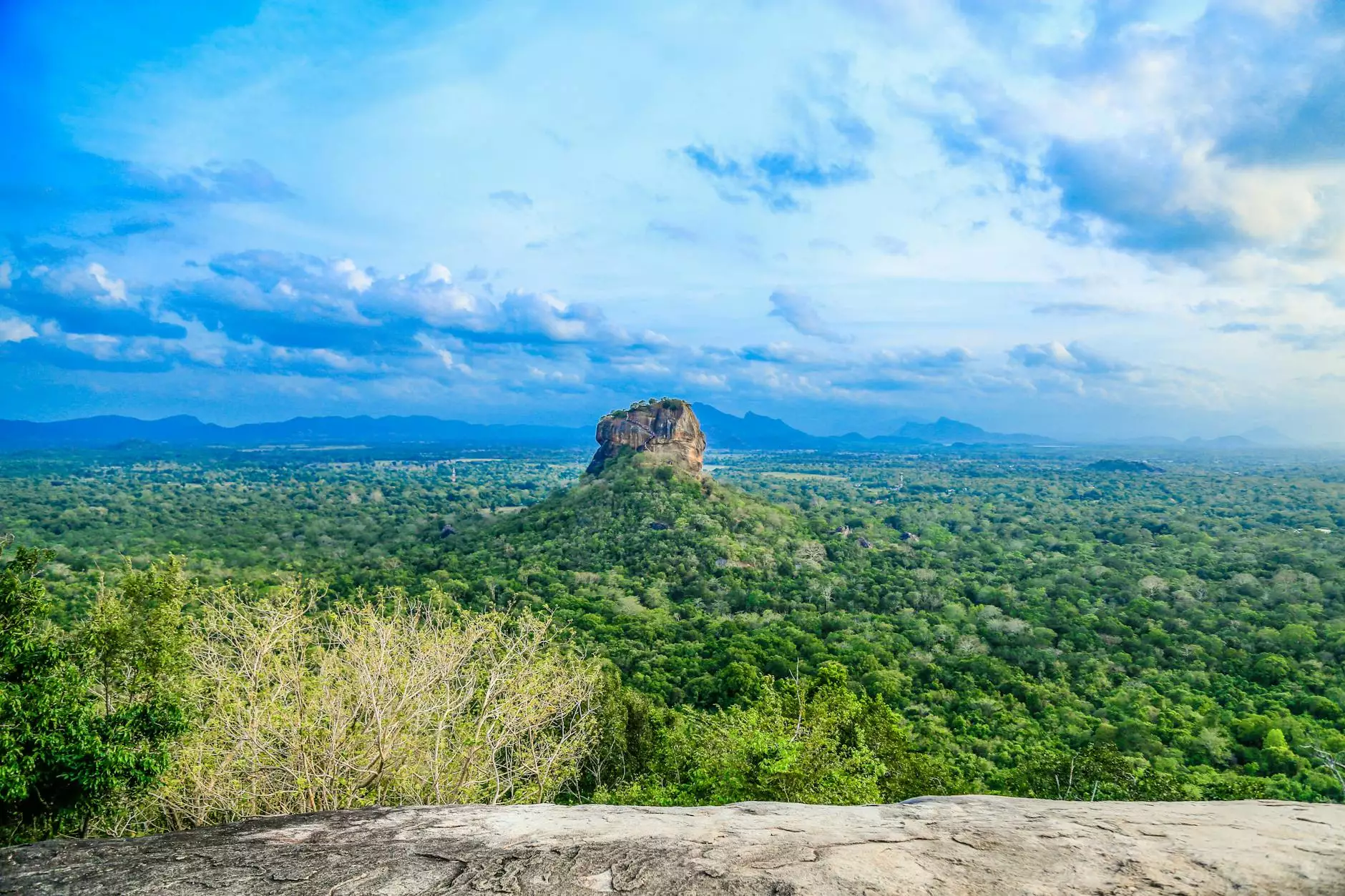Exploring the Majestic Sigiriya Rock Fortress: A Travel Guide

The Sigiriya Rock Fortress, often referred to as Lion's Rock, is not just a remarkable piece of architecture; it is a treasure trove of history and a symbol of Sri Lankan heritage. Located in the heart of Sri Lanka, this UNESCO World Heritage site stands tall amidst lush greenery and offers breathtaking views of the surrounding landscape. In this comprehensive guide, we will delve into the fascinating aspects of the Sigiriya Rock Fortress, its history, significance, and essential travel tips to ensure an unforgettable experience.
Understanding the Historical Significance of Sigiriya
The Sigiriya Rock Fortress dates back to the 5th century AD, constructed during the reign of King Kasyapa I. It is believed to have served as a royal citadel, showcasing a blend of urban planning, architecture, and art of ancient Sri Lanka. The site is renowned for its magnificent frescoes, intricate gardens, and innovative water features that highlight the engineering prowess of the time.
The Architectural Marvel of Sigiriya
As you approach the Sigiriya Rock Fortress, the sheer magnitude of the rock formation, rising about 200 meters (650 feet) above the surrounding plains, leaves you awestruck. The fortress complex is designed in a way that incorporates both defensive mechanisms and aesthetic beauty.
Key Features of the Sigiriya Fortress
- The Lion’s Gate: The entrance to the fortress features an impressive lion's paw, marking the beginning of your ascent. The remnants of the colossal lion statue, from which the fortress gets its name, are captivating.
- The Mirror Wall: Known for its ancient graffiti, the mirror wall was once so polished that it reflected images of the king and his surroundings.
- The Frescoes: Stunning murals depict celestial maidens, showcasing the artistic freedom and skill of ancient artists. These paintings are a significant highlight of the site.
- The Gardens: The gardens of Sigiriya, consisting of water gardens, boulder gardens, and terraced gardens, reflect intricate landscaping that is still admired today.
The Cultural Relevance of Sigiriya
The Sigiriya Rock Fortress is more than a historical site; it is a symbol of Sri Lanka's cultural and spiritual heritage. Many historians believe that King Kasyapa chose this location intentionally, integrating Buddhist monastic traditions and Hindu influences into its design.
Religious Significance
After Kasyapa’s reign, Sigiriya transitioned into a Buddhist monastic site, underscoring its deep spiritual roots. This dual significance enhances the fortress’s value, as it represents both royal ambition and devotion to Buddhism.
Visiting the Sigiriya Rock Fortress
Planning a visit to the Sigiriya Rock Fortress involves several considerations, from the best time to explore the site to essential travel tips to maximize your experience. Below are some valuable insights.
Best Time to Visit
The ideal time to visit Sigiriya is during the dry season, which runs from December to April. This period provides comfortable temperatures, and clear skies, enhancing your experience while climbing the fortress.
Travel Tips for a Memorable Visit
- Wear Comfortable Shoes: The ascent to the top of Sigiriya involves a climb that can be strenuous. Proper footwear is essential.
- Hydrate: Bring water along, especially if visiting during the warmer months. Staying hydrated is crucial.
- Guided Tours: Consider hiring a local guide. They provide valuable insights and stories about the fortress that enhance your journey.
- Explore Early or Late: To avoid the midday heat and crowds, visiting early in the morning or later in the afternoon is advisable.
- Capture the View: Don’t forget your camera. The panoramic views from the summit are breathtaking and worth preserving.
Exploring the Surrounding Attractions
While the Sigiriya Rock Fortress is the main attraction, the area is rich in options for further exploration. Here are some notable nearby sites:
Dambulla Cave Temple
Located approximately 30 minutes from Sigiriya, the Dambulla Cave Temple is another UNESCO World Heritage site featuring exquisite cave paintings and numerous Buddha statues, highlighting the country’s deep religious ties.
Pidurangala Rock
A nearby alternative hike offers stunning views of both Sigiriya Rock and the surrounding landscape. The journey to the top of Pidurangala is rewarding and less crowded, ideal for those seeking a quieter experience.
The Role of Travel Agents in Your Sigiriya Journey
Utilizing the services of travel agents can significantly enhance your visit to the Sigiriya Rock Fortress. Knowledgeable travel agents can help you plan your itinerary, provide transportation, and offer insights on local customs and attractions.
Why Choose overatours.com?
At overatours.com, we specialize in providing tailored travel services that ensure a seamless experience. Our expert travel agents understand the intricacies of Sri Lankan travel and are dedicated to helping you explore the beauty of Sigiriya and beyond. From arranging guided tours at the fortress to providing insights on the best local dining options, our commitment is to enhance your travel experience.
Conclusion
The Sigiriya Rock Fortress stands as a monumental testament to Sri Lanka's rich history, architectural ingenuity, and cultural heritage. Its ancient walls whisper stories that transcend centuries, inviting travelers to immerse themselves in the past while enjoying breathtaking views of the present. By visiting Sigiriya, you are not only exploring a beautiful destination but also connecting with a part of the world that has captivated hearts for generations. With expert support from travel agents like those at overatours.com, your journey to this remarkable site can be crafted into a delightful adventure.
Whether you're an adventurer, a history enthusiast, or simply looking for a unique travel experience, Sigiriya awaits you with open arms and tales to tell. Plan your visit today!



